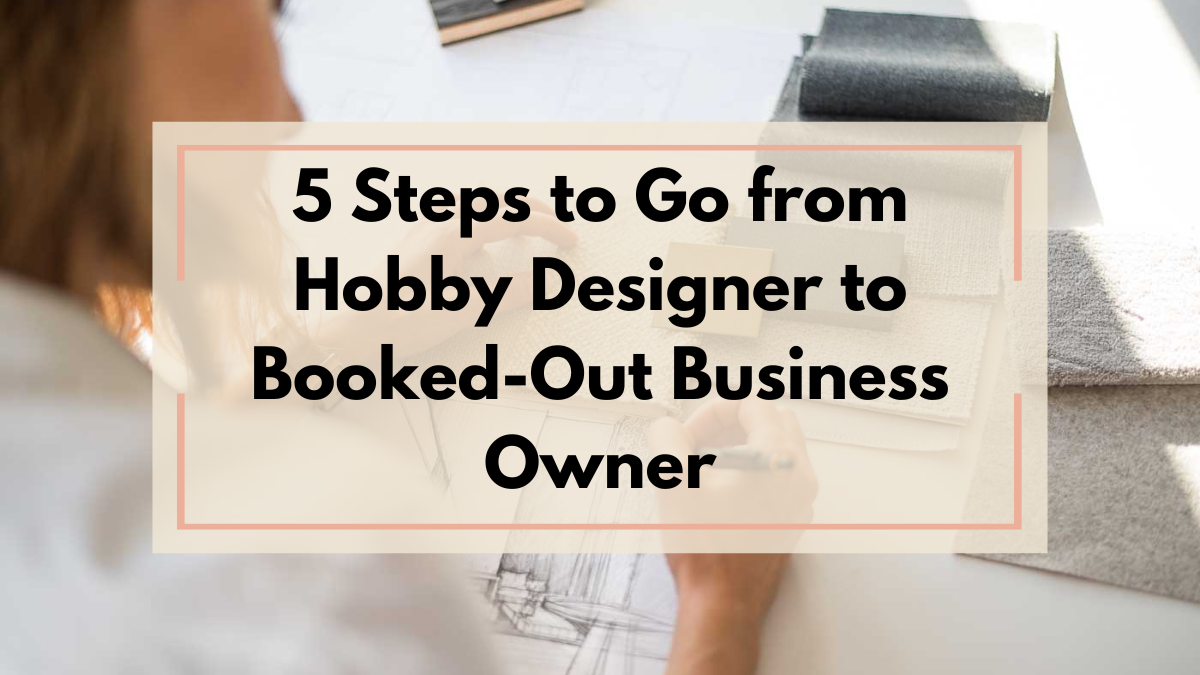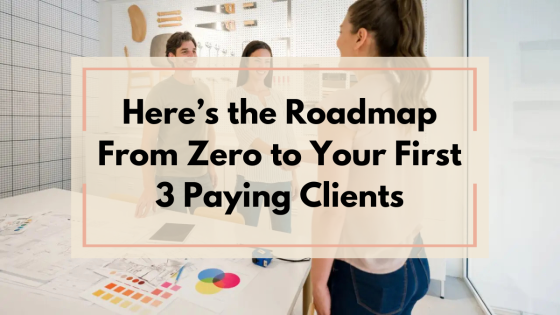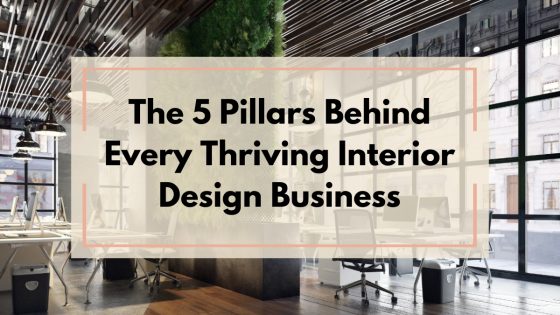5 Steps to Go from Hobby Designer to Booked-Out Business Owner

Do you remember why you first fell in love with interior design? Maybe it was the thrill of transforming spaces, the joy of helping friends redecorate their homes, or simply your natural eye for aesthetics. What began as a passion project has evolved, and now you're wondering: how do I turn this talent into a thriving business? Maybe you’ve picked up a few freelance gigs. Maybe people already tell you, “You should really charge for this.” But the idea of running a real business feels intimidating. You want to be fully booked, earning consistently, and finally calling yourself a business owner with confidence.
The gap between where you are now and running a fully booked design business isn't as wide as you might think. After coaching interior designers through this exact transition, I've identified five critical steps that separate hobby designers from successful business owners. This empowers your creative spirit by giving it the professional framework it deserves, so you can focus on what you love and earn what you’re truly worth. You don’t need to have it all figured out today. You just need a clear path forward and a mindset shift that moves you from “I dabble” to “I deliver.”
In this post, I’ll walk you through five foundational steps to help you shift from hobbyist to high-performing interior design CEO.
Step #1: Own Your Identity as a Business Owner
The first transformation needs to happen between your ears. Stop thinking of yourself as "just" a designer who happens to get paid. You're the CEO of your own design firm even if it's currently a firm of one. This means making decisions based on business strategy, not just creative satisfaction.
Start by blocking time each week specifically for working ON your business, not just IN it. During this time, review your numbers, plan your marketing, and set clear goals. Successful designers don't wait for permission to call themselves professionals, they claim that identity and act accordingly.
Practice introducing yourself confidently as an interior designer or design firm owner rather than hedging with phrases like "I do a little decorating on the side." Your mindset shapes how clients perceive you, and perception affects what they're willing to pay. When you truly believe in your value as a professional, it becomes much easier to charge professional rates.
6826e06c63843_lg.png)
Step #2: Create Packages and Processes
Hobby designers work on a whim, while successful business owners create systems. Develop clear service packages with defined deliverables, timelines, and pricing. This structure helps clients understand exactly what they're getting and eliminates the endless scope creep that plagues hobbyists.
Document your design process from initial consultation to project completion.
- What questions do you ask in the first meeting?
- How do you present concepts?
- When do you order materials?
Creating templates and checklists for each stage makes your business scalable and ensures consistent quality.
Consider offering tiered packages to serve different client budgets. Perhaps an entry-level "Design Direction" package, a mid-tier "Full Room Design," and a premium "Complete Transformation" option. With defined packages, potential clients can self-select the service level that fits their needs, and you can avoid the dreaded "Can you just give me a few quick ideas?" requests that devalue your expertise.
Step #3: Price for Profitability, Not Just Survival
Many designers transitioning from hobby to business make a critical mistake: they price their services to cover only hard costs and maybe a modest hourly rate. This approach guarantees burnout. Instead, build a pricing structure that accounts for:
- Your expertise and talent (not just your time)
- Business overhead (software, insurance, marketing)
- Profit margin (beyond just paying yourself a salary)
- Taxes and retirement savings
Calculate your actual hourly cost by tracking how much time you spend on all aspects of a project, including client communication, sourcing, and administrative tasks. Most designers are shocked to discover they're working for pennies when these "invisible hours" are factored in.
Remember: underpricing doesn't just hurt you; it undermines the entire profession. When you charge professional rates, you're able to deliver professional results, creating a positive cycle that elevates the perceived value of design services in your market.
6826e10a67eff_lg.png)
Step #4: Implement Strategic Marketing for Your Ideal Client
Hobby designers take any project that comes their way. Successful business owners strategically attract their ideal clients. Define exactly who you want to work with - their aesthetic preferences, budget range, communication style, and project types.
Create content and marketing materials specifically tailored to this ideal client. This might include:
- A portfolio showcasing only the types of projects you want more of
- Blog posts addressing the specific challenges your ideal clients face
- Social media content that appeals to their aesthetic sensibilities
- Case studies demonstrating your process and the transformative results
The most effective marketing for designers is highly targeted and not generic. When potential clients feel like you're speaking directly to them and their specific needs, they're more likely to reach out and they're pre-qualified to value what you offer. Focus your energy on becoming known as the go-to designer for a specific type of client or project rather than trying to appeal to everyone.
Step #5: Build a Network of Support and Referral Partners
No successful business exists in isolation. Identify complementary professionals who serve the same clientele but don't compete directly such as, architects, contractors, real estate agents, custom furniture makers, and high-end home organizers. Develop genuine relationships with these professionals based on mutual respect and referrals.
Join professional organizations, not just for the credentials but for the community. Attend industry events and participate in designer showcases to increase your visibility among potential referral partners.
Consider creating a formalized referral program that rewards people who send clients your way. This might be a finder's fee, a gift, or a reciprocal referral arrangement. The most sustainable client acquisition strategy isn't paid advertising but a strong network of people who enthusiastically recommend you.
6826e1ff92d86_lg.png)
Conclusion
Turning your design passion into a thriving, booked-out business is totally within reach. But it doesn’t happen by accident. It happens when you start thinking like a business owner, package your services, create smart systems, build a magnetic brand, and show up consistently to market yourself.
You don’t have to do all five steps in one day. But if you take one intentional action each week, imagine where you could be 90 days from now.
Need help getting started? Download the Be Your Own Boss Guide - a practical, step-by-step resource for interior designers ready to go from occasional gigs to fully booked. It’s packed with mindset shifts, and next steps tailored to creatives like you. It’s time to stop dabbling and start leading. Let’s build the design business you’ve always dreamed of one smart move at a time
Ready to transform your project management approach? Check out RDash to see how their designer-focused platform can streamline your operations. Use exclusive discount code “INDesignDeskfeb25” to get 20% off your subscription plan! If you’re serious about optimizing your workflow, sign up for a free demo session right here.
Thank you for reading ❤️
Categories: : Business Growth
 Rikaza Shakeer
Rikaza Shakeer 


